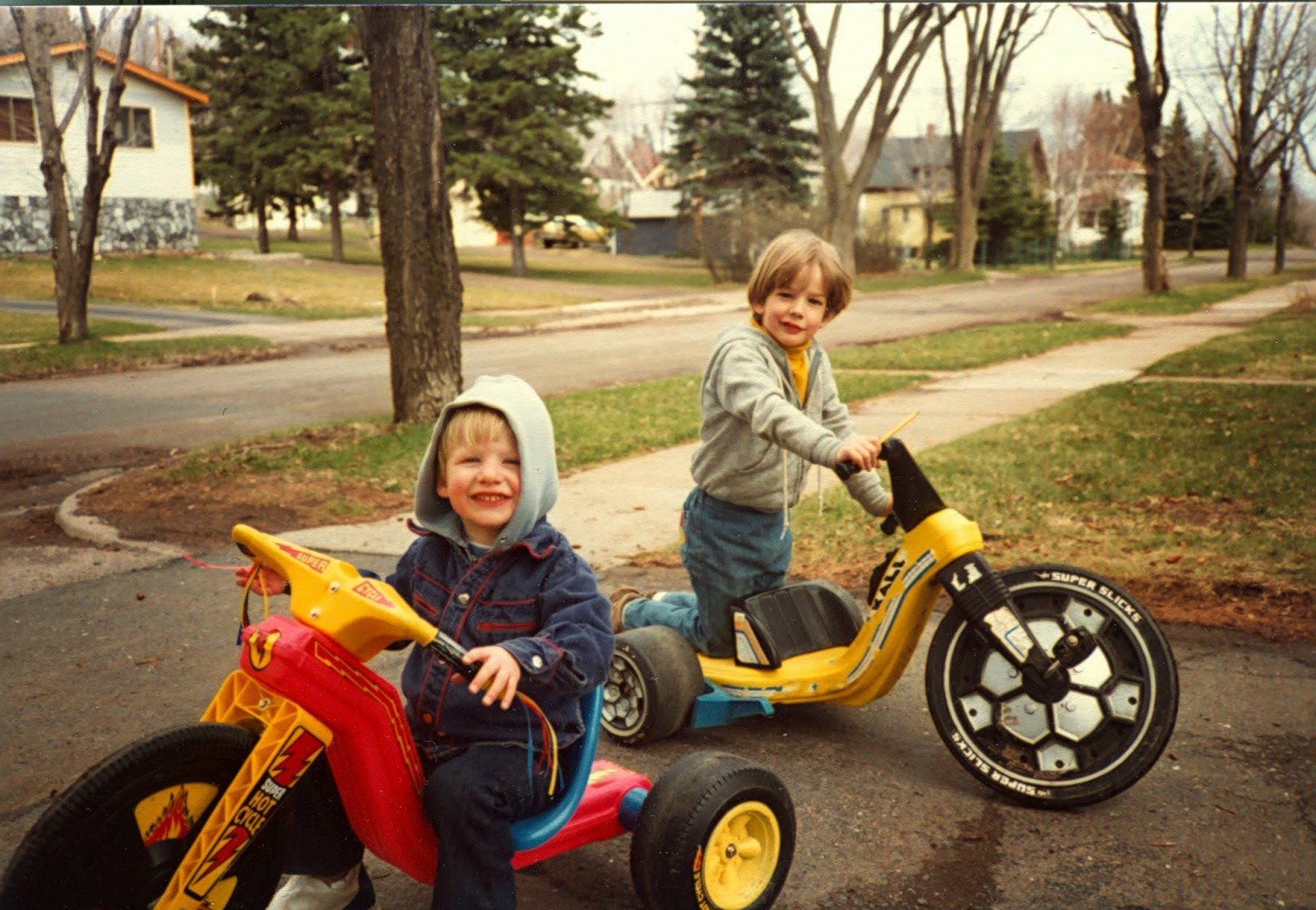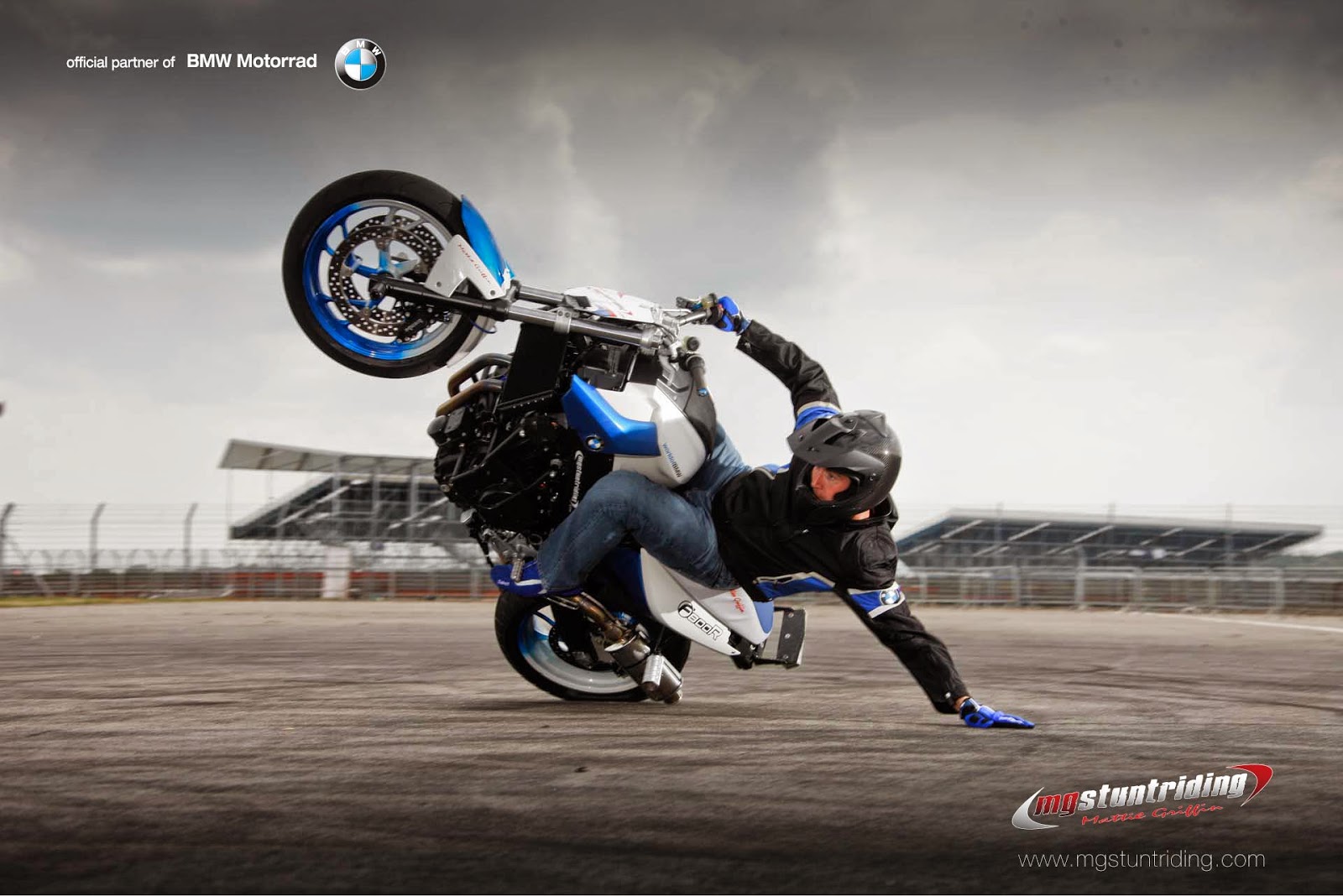"Well, you know, maybe you should ask your wife first."
"She loves Triumphs," I said.
"Still, Chris. You should give it a think. Go home, discuss it with your wife, give yourself a chance to think clearly. After all, this is one of Triumph's most popular models; there's plenty of stock available."
The voice of reason in that conversation was Drew, the salesman at Bevan Motorcycles. He was doing his best to talk some sense into me after my test ride of the 2014 Triumph Bonneville. I was wild-eyed and yammering like a teenage boy who has touched boobies for the first time. This, my friends, is what the Bonneville does to you. It is an instantly rideable, instantly enjoyable, instantly lovable motorcycle that surprises you in just how good a simple motorcycle can be.
The Bonneville, of course, is a storied machine that's been around in one form or another for 55 years. It is a classic. Partially because of that, some part of me was expecting the Bonneville experience to be equally "classic" -- and "full of character," and various other cliches that are tactful ways of saying "not terribly pleasant."
Another reason I thought this is that the Bonneville produces the same amount of power and torque as the Harley-Davidson Sportster 1200: a bike I absolutely loved riding but which had a few "character" issues that would make it difficult for me to love in the long term. Specifically, I am thinking of how unpleasant was riding at high speed, and the Sportster's ergonomic ability to make me sore in all kinds of places (knees and back, primarily).
The Sportster, too, has a heritage extending back to the late 1950s. So, I suppose that's what I was expecting when I hopped on a Bonneville and set out on a quick tour of the Vale of Glamorgan last week. But it turned out to be something rather wonderfully different. The Bonneville is nimble, fun and sexy, feels lighter than its weight would suggest, and is just so damned easy to ride.
Over and over, when the bike leapt to well above the speed limit, when it flowed through curves, when it danced through traffic, when it cruised at 70 mph without strain, I was hit by the impression of just how easy it is to ride a Bonneville. This is what motorcycling is supposed to be. Rather than asserting your will over the fire-driven dandy horse -- as was my experience in riding Harley-Davidsons and is even the case when muscling my Honda CBF600SA through certain tight spots -- you simply connect with it. You think; it does. Simple. Beautiful. Easy. Indeed, those three words sum up the Bonneville perfectly.
Simple
The stock Bonneville is, admittedly, a no-frills affair. You get wheels, an engine, brakes, a seat and not a great deal else. The dashboard consists of an analog speedometer face, within which is contained a small digital odometer. That digital display has two trip settings and a clock. Also within the same face is a tiny low-fuel warning light. Next to the round face are four lights to tell you: when you are in neutral, when your turn signal is on, when your high beams are on, and when you're running low on oil.
There is a tremendous selection of aftermarket goods available for the Bonneville, so a tachometer can be easily had for those keen to spend a few hundred dollars/pounds/euros more.
The aftermarket caveat applies to every aspect of the bike, but in stock form the Bonneville also lacks any wind protection. However, I found this to be surprisingly less bothersome than I would have thought. Perhaps because of the seating position I felt the wind most at my stomach and did not feel a need to keep a death grip on the bars. Leaning forward just slightly made it even more tolerable and I felt I could comfortably handle a solid 40-60 minutes of nonstop motorway riding before needing a tea break. By comparison, I would expect to last 60-90 minutes behind the windscreen of my CBF600SA.
The brakes consist of just two discs -- one up front and one in back -- and there is no anti-lock option available. This is probably my greatest concern about the Bonneville, but the brakes perform so well that I find myself willing to overlook it.
The single seat offers plenty of room to move around when riding, and for a human-sized passenger. It's a good bet passengers will feel more comfortable on the Bonneville than on other bikes because most will be able to touch their feet to the ground. However, it has to be said that the seat is quite firm, as are the standard shocks. I deliberately hit pot holes on my test ride and can confirm that doing so is not terribly pleasant. As a regular cyclist (on a road bicycle that has no suspension), I didn't find it unbearable, but those of a more sensitive nature may want to factor in the cost of a new suspension when considering this motorcycle.
Beyond a grab rail on that seat there aren't a great deal of places to strap things to the standard Bonneville. But, again, the aftermarket comes to the rescue with endless racks and sissy bars and panniers.
Beautiful
There's no denying that the Bonneville is a joy to look at. It is a machine that elicits a sort of warmth and approval from everyone. Or, at least, that seems to be the way of things in Britain. It has a certain quality that draws the eye, that makes you want to trace the lines of the frame and fenders and handlebars. It is the sort of bike that men speak to and whisper "baby" at: "Come on, baby, let's show 'em what we can do."
Jay Leno often says he prefers a motorcycle you can see through, meaning that it is uncluttered by body work, and that is certainly true of the Bonneville. The parallel twin engine serves as a showpiece, with the exhausts swooping forward, then dipping below your feet. Indicators and lights have utilitarian beauty. Everything is there because it's supposed to be. Even when it's not; the carburetors are purely aesthetic on this fuel-injected bike.
![]() I found the sound of the exhaust to be delightful: growling enough to let me know I'm on a motorcycle, to send those silly manly shivers up and down my spine, but not so loud or obnoxious that it would upset my 75-year-old neighbours.
I found the sound of the exhaust to be delightful: growling enough to let me know I'm on a motorcycle, to send those silly manly shivers up and down my spine, but not so loud or obnoxious that it would upset my 75-year-old neighbours.
Easy
The Triumph Bonneville has an incredible get-on-and-go quality. With anything -- a car, a motorcycle, a bicycle -- there is a certain space of time in which you adapt from one version to the other. For the Bonneville, that adaptation time consisted of seconds. Everything was just there, it just worked. It felt right. It was instant zen.
The bike weighs 225 kg (496 lbs.), roughly the same as my Honda CBF600SA but somehow manages to wear that weight so much better. That is true both in terms of handling on the road and in physically moving it about. After the ride I hopped off the bike without putting down the kickstand; the bike started to tip but I caught it, one-handed, and comfortably pushed it back upright from an angle that quite possibly would have been the point of no return on my own bike.
And, as I say, the same lightness shows up on the road. Corners and curves were easily navigated; roundabouts suddenly became fun. When I wasn't aiming at pot holes for the sake of testing the suspension, they were no trouble to dance around.
In city sections, filtering was so natural it felt almost like filtering on a bicycle. Jumping from the line (i.e., accelerating from a traffic light) put me well ahead of traffic and out of danger, and did not require rapid gear changing. First gear goes a lot further than on my existing bike, probably even further than I realised because I never heard the engine strain.
Getting up to motorway speeds was, in fact, easier than on my bike and holding that speed put no strain on the engine. Drew, the aforementioned level-headed salesman, made the comment that the Bonneville can "cruise the ton all day" and I'd certainly believe it. I pushed the bike to 90 mph at one point (a) and could tell the engine still had plenty more to give. The engine was not screaming, the way a Sportster does at such speed, nor was there any noticeable vibration (beyond the obvious vibration that would occur on any object travelling that speed).
I felt confident the Bonneville would have no trouble delivering Jenn and I to the beach or a country pub. With a little aftermarket love, it would be equally up to the task of carrying me across the length and breadth of Europe. And certainly I wouldn't be the first one to try such a thing. In looking more into Bonnevilles I find that quite a few people choose them as touring bikes.
And in that sense the Bonneville is easy to transform into whatever motorcycle you want it to be. Need a bike that makes you look cool? This is it. Need a bike you can beat to hell going back and forth across continents? This is it. Need a bike that can zip you through traffic and tiny filtering gaps? This is it. Need a bike that won't look silly in 10 years (as opposed to any sport bike)? This is it. Need a bike you can actually afford? This is it.
![]() Only two complaints
Only two complaints
As I alluded to above, the Triumph Bonneville is not the perfect motorcycle. My main issues with it are:
1) I don't own one (yet)
2) Anti-lock brakes are not available.
But for me, the overall experience of the bike is so incredible that I find myself almost willing to overlook my set-in-stone rule for bikes and brakes. I felt totally confident in the Bonneville's standard brakes and I am notoriously cautious in my riding. Perhaps. For such a wonderful machine, perhaps I'd break my old rule...
So, that brings us to the three questions that must be answered in any ride review:
1) Will it fit in my garden?
Effectively this is a question about practicality, i.e., am I able to incorporate this bike into my existing lifestyle? But whether you want to interpret the question literally or figuratively, the answer is yes. It is small enough and manoeuvrable enough to fit into the tiny space that is my garden shed. It is adaptable enough that it can fit my lifestyle.
2) Does it put a grin on my face?
Oh, hell yeah, it does. Salesman Drew had to calm me down. I spent the evening afterward showing pictures of the bike to my wife. I am sitting here, several days later, still grinning.
3) Is it better than my current motorcycle?
Yes. There are a few points my current bike could score on a stock Bonneville in terms of heated grips and wind screen, but these are items that can be added. Beyond that, the only other sticking point is anti-lock brakes. But some part of me feels that perhaps the reason I've been so religious about ABS is that, deep down, I've not really felt 100-percent in control of my CBF600SA, especially in terms of its top-heavy nature. The Bonneville, meanwhile, feels lighter and made me feel more confident. Additionally, it is a better-handling motorcycle than my Honda, the pull of its engine is more thrilling, and its sexiness is infinitely greater.
The Bonneville has shown up quite a few times on my What I Want list. Now that I've finally ridden one I am very, very, very seriously considering taking it out of the realm of wishing and into reality...
_______________
(a)If you are a member of South Wales Police, this is a lie told for entertainment purposes only. I never exceed the speed limit.
The Bonneville, of course, is a storied machine that's been around in one form or another for 55 years. It is a classic. Partially because of that, some part of me was expecting the Bonneville experience to be equally "classic" -- and "full of character," and various other cliches that are tactful ways of saying "not terribly pleasant."
Another reason I thought this is that the Bonneville produces the same amount of power and torque as the Harley-Davidson Sportster 1200: a bike I absolutely loved riding but which had a few "character" issues that would make it difficult for me to love in the long term. Specifically, I am thinking of how unpleasant was riding at high speed, and the Sportster's ergonomic ability to make me sore in all kinds of places (knees and back, primarily).
The Sportster, too, has a heritage extending back to the late 1950s. So, I suppose that's what I was expecting when I hopped on a Bonneville and set out on a quick tour of the Vale of Glamorgan last week. But it turned out to be something rather wonderfully different. The Bonneville is nimble, fun and sexy, feels lighter than its weight would suggest, and is just so damned easy to ride.
Over and over, when the bike leapt to well above the speed limit, when it flowed through curves, when it danced through traffic, when it cruised at 70 mph without strain, I was hit by the impression of just how easy it is to ride a Bonneville. This is what motorcycling is supposed to be. Rather than asserting your will over the fire-driven dandy horse -- as was my experience in riding Harley-Davidsons and is even the case when muscling my Honda CBF600SA through certain tight spots -- you simply connect with it. You think; it does. Simple. Beautiful. Easy. Indeed, those three words sum up the Bonneville perfectly.
Simple
The stock Bonneville is, admittedly, a no-frills affair. You get wheels, an engine, brakes, a seat and not a great deal else. The dashboard consists of an analog speedometer face, within which is contained a small digital odometer. That digital display has two trip settings and a clock. Also within the same face is a tiny low-fuel warning light. Next to the round face are four lights to tell you: when you are in neutral, when your turn signal is on, when your high beams are on, and when you're running low on oil.
There is a tremendous selection of aftermarket goods available for the Bonneville, so a tachometer can be easily had for those keen to spend a few hundred dollars/pounds/euros more.
The aftermarket caveat applies to every aspect of the bike, but in stock form the Bonneville also lacks any wind protection. However, I found this to be surprisingly less bothersome than I would have thought. Perhaps because of the seating position I felt the wind most at my stomach and did not feel a need to keep a death grip on the bars. Leaning forward just slightly made it even more tolerable and I felt I could comfortably handle a solid 40-60 minutes of nonstop motorway riding before needing a tea break. By comparison, I would expect to last 60-90 minutes behind the windscreen of my CBF600SA.
The brakes consist of just two discs -- one up front and one in back -- and there is no anti-lock option available. This is probably my greatest concern about the Bonneville, but the brakes perform so well that I find myself willing to overlook it.
The single seat offers plenty of room to move around when riding, and for a human-sized passenger. It's a good bet passengers will feel more comfortable on the Bonneville than on other bikes because most will be able to touch their feet to the ground. However, it has to be said that the seat is quite firm, as are the standard shocks. I deliberately hit pot holes on my test ride and can confirm that doing so is not terribly pleasant. As a regular cyclist (on a road bicycle that has no suspension), I didn't find it unbearable, but those of a more sensitive nature may want to factor in the cost of a new suspension when considering this motorcycle.
Beyond a grab rail on that seat there aren't a great deal of places to strap things to the standard Bonneville. But, again, the aftermarket comes to the rescue with endless racks and sissy bars and panniers.
Beautiful
There's no denying that the Bonneville is a joy to look at. It is a machine that elicits a sort of warmth and approval from everyone. Or, at least, that seems to be the way of things in Britain. It has a certain quality that draws the eye, that makes you want to trace the lines of the frame and fenders and handlebars. It is the sort of bike that men speak to and whisper "baby" at: "Come on, baby, let's show 'em what we can do."
Jay Leno often says he prefers a motorcycle you can see through, meaning that it is uncluttered by body work, and that is certainly true of the Bonneville. The parallel twin engine serves as a showpiece, with the exhausts swooping forward, then dipping below your feet. Indicators and lights have utilitarian beauty. Everything is there because it's supposed to be. Even when it's not; the carburetors are purely aesthetic on this fuel-injected bike.
 I found the sound of the exhaust to be delightful: growling enough to let me know I'm on a motorcycle, to send those silly manly shivers up and down my spine, but not so loud or obnoxious that it would upset my 75-year-old neighbours.
I found the sound of the exhaust to be delightful: growling enough to let me know I'm on a motorcycle, to send those silly manly shivers up and down my spine, but not so loud or obnoxious that it would upset my 75-year-old neighbours.Easy
The Triumph Bonneville has an incredible get-on-and-go quality. With anything -- a car, a motorcycle, a bicycle -- there is a certain space of time in which you adapt from one version to the other. For the Bonneville, that adaptation time consisted of seconds. Everything was just there, it just worked. It felt right. It was instant zen.
The bike weighs 225 kg (496 lbs.), roughly the same as my Honda CBF600SA but somehow manages to wear that weight so much better. That is true both in terms of handling on the road and in physically moving it about. After the ride I hopped off the bike without putting down the kickstand; the bike started to tip but I caught it, one-handed, and comfortably pushed it back upright from an angle that quite possibly would have been the point of no return on my own bike.
And, as I say, the same lightness shows up on the road. Corners and curves were easily navigated; roundabouts suddenly became fun. When I wasn't aiming at pot holes for the sake of testing the suspension, they were no trouble to dance around.
In city sections, filtering was so natural it felt almost like filtering on a bicycle. Jumping from the line (i.e., accelerating from a traffic light) put me well ahead of traffic and out of danger, and did not require rapid gear changing. First gear goes a lot further than on my existing bike, probably even further than I realised because I never heard the engine strain.
Getting up to motorway speeds was, in fact, easier than on my bike and holding that speed put no strain on the engine. Drew, the aforementioned level-headed salesman, made the comment that the Bonneville can "cruise the ton all day" and I'd certainly believe it. I pushed the bike to 90 mph at one point (a) and could tell the engine still had plenty more to give. The engine was not screaming, the way a Sportster does at such speed, nor was there any noticeable vibration (beyond the obvious vibration that would occur on any object travelling that speed).
I felt confident the Bonneville would have no trouble delivering Jenn and I to the beach or a country pub. With a little aftermarket love, it would be equally up to the task of carrying me across the length and breadth of Europe. And certainly I wouldn't be the first one to try such a thing. In looking more into Bonnevilles I find that quite a few people choose them as touring bikes.
And in that sense the Bonneville is easy to transform into whatever motorcycle you want it to be. Need a bike that makes you look cool? This is it. Need a bike you can beat to hell going back and forth across continents? This is it. Need a bike that can zip you through traffic and tiny filtering gaps? This is it. Need a bike that won't look silly in 10 years (as opposed to any sport bike)? This is it. Need a bike you can actually afford? This is it.
 Only two complaints
Only two complaintsAs I alluded to above, the Triumph Bonneville is not the perfect motorcycle. My main issues with it are:
1) I don't own one (yet)
2) Anti-lock brakes are not available.
But for me, the overall experience of the bike is so incredible that I find myself almost willing to overlook my set-in-stone rule for bikes and brakes. I felt totally confident in the Bonneville's standard brakes and I am notoriously cautious in my riding. Perhaps. For such a wonderful machine, perhaps I'd break my old rule...
So, that brings us to the three questions that must be answered in any ride review:
1) Will it fit in my garden?
Effectively this is a question about practicality, i.e., am I able to incorporate this bike into my existing lifestyle? But whether you want to interpret the question literally or figuratively, the answer is yes. It is small enough and manoeuvrable enough to fit into the tiny space that is my garden shed. It is adaptable enough that it can fit my lifestyle.
2) Does it put a grin on my face?
Oh, hell yeah, it does. Salesman Drew had to calm me down. I spent the evening afterward showing pictures of the bike to my wife. I am sitting here, several days later, still grinning.
3) Is it better than my current motorcycle?
Yes. There are a few points my current bike could score on a stock Bonneville in terms of heated grips and wind screen, but these are items that can be added. Beyond that, the only other sticking point is anti-lock brakes. But some part of me feels that perhaps the reason I've been so religious about ABS is that, deep down, I've not really felt 100-percent in control of my CBF600SA, especially in terms of its top-heavy nature. The Bonneville, meanwhile, feels lighter and made me feel more confident. Additionally, it is a better-handling motorcycle than my Honda, the pull of its engine is more thrilling, and its sexiness is infinitely greater.
The Bonneville has shown up quite a few times on my What I Want list. Now that I've finally ridden one I am very, very, very seriously considering taking it out of the realm of wishing and into reality...
_______________
(a)If you are a member of South Wales Police, this is a lie told for entertainment purposes only. I never exceed the speed limit.




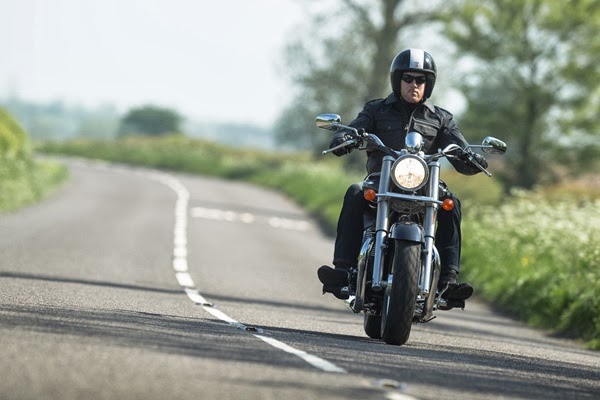



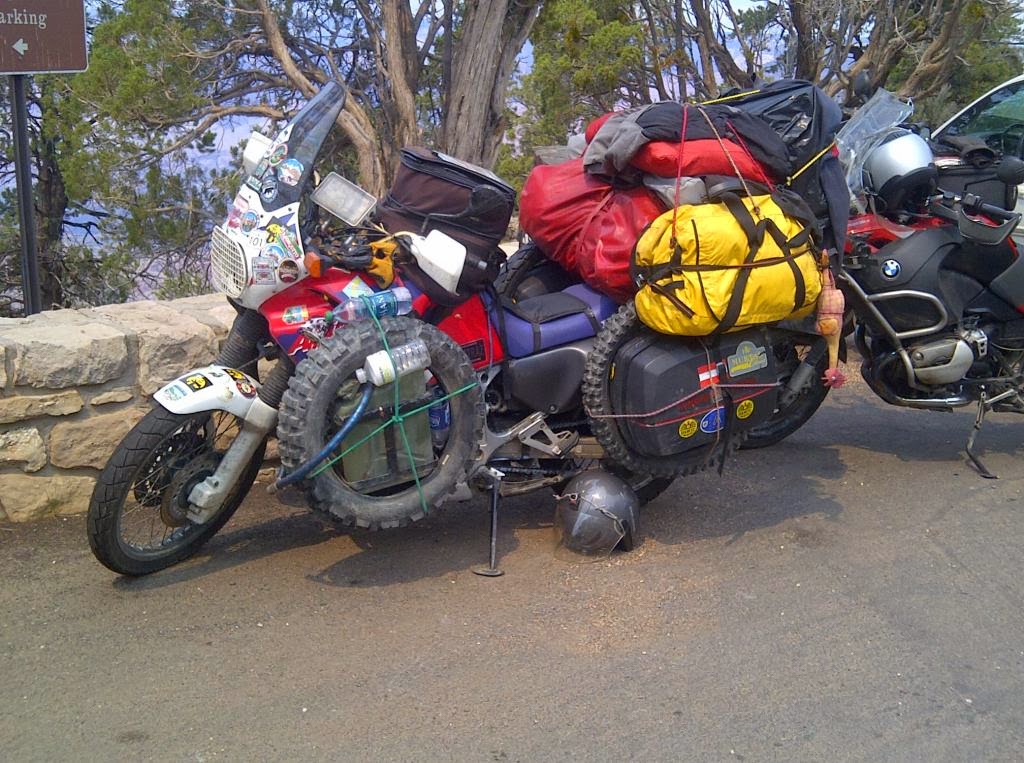














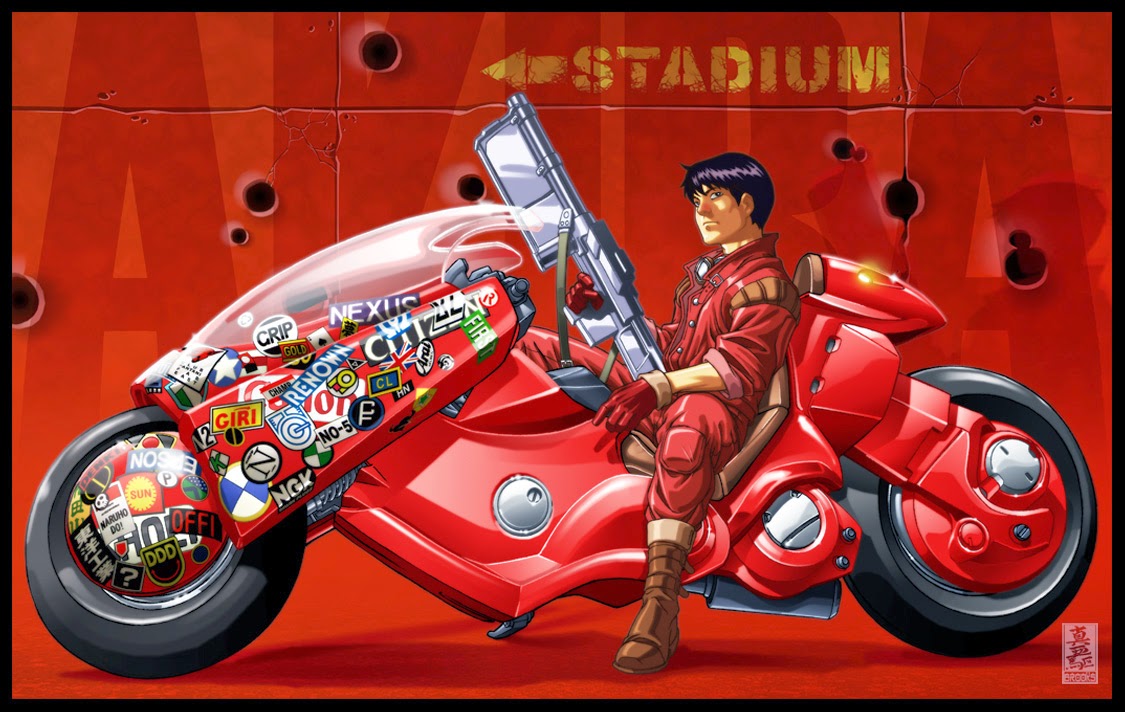




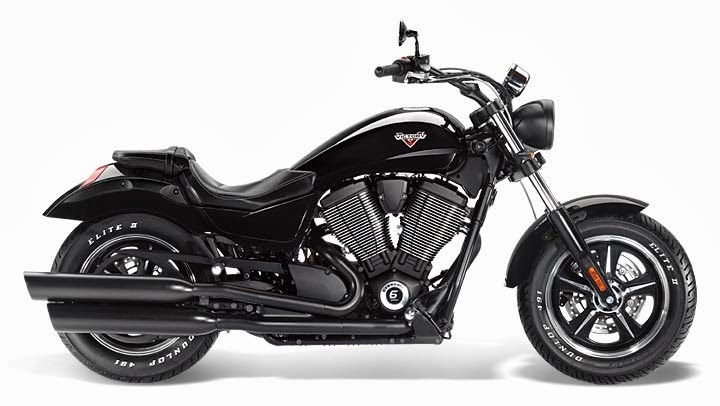



 these days, which helps improve my posture and eliminate some fatigue.
these days, which helps improve my posture and eliminate some fatigue.